The petrol version of the Toyota Prado is in a small, elite group: a big and heavy SUV running a thirsty, smooth petrol engine. In a world where hybrids and electric cars make the news regularly, this seems like a throwback in time.
I recently tested the diesel version of the VX with the new 2.8 litre engine and all-new 6-speed automatic. The combo of that engine and gearbox was a winner. I wasn’t expecting to like the petrol version too much – sure I was looking forward to that power, but I loved the diesel version so much I gave it a 4.5 Chevron rating. Would the VX V6 have the same impact and drivability?
First Impressions
Déjà vu. The petrol VX is pretty much identical inside and out to the diesel VX. That’s not a bad thing at all though, I love the interior of the VX. While the outside is little changed from the previous model Prado, the interior is much more modern, and as you would expect at near on $90K, pretty luxurious. I’m not going to go on about the interior or exterior too much – you can read more on that here. Needless to say though if you can’t be bothered reading the diesel review, you aren’t left for wanting much…until you compare the equipment levels to the recently-released and similarly priced Ford Everest, and then the shine wears off a little.
I’m likely going to keep mentioning the Ford Everest, as that’s a car that’s a direct competitor to the VX diesel. Okay, we are testing the petrol version here, but it’s still relevant. Ford have the Prado directly in their sights when it comes to the competition.
Back to the Prado: heated front and second row seats (full leather of course), Blind Spot Monitoring, electrically adjustable steering wheel, electric driver and passenger seats (driver’s seat has electric lumbar adjustment), 7” touchscreen monitor, excellent 14-speaker JBL stereo, front and rear parking sensors (as well as a reversing camera, naturally), auto lights and wipers. There is more, including things like the four-camera multi terrain monitor – again, check out the diesel review for more details.
Don’t try and stop me, I’m going to compare it to the Everest. While there is no petrol Everest, the Titanium diesel version is about the same price as the diesel or petrol Prado, and yet has an electric rear door, Active Noise Cancellation, a panoramic sunroof (with an electric blind) and Parking Assist, to name a few things it has over the Prado. As far as equipment levels go, the Everest has trumped it since my review in August.
I know I mentioned this in the diesel article but it’s worth mentioning again. The space behind the 3rd row of seats (if they are up) is measured in inches, and not many of them. Plan on buying a pod for the roof if you want to make regular use of the 3rd row. The Everest has the Prado beat in this area.
What’s it like to live with?
So if I’ve recently tested the diesel version, what’s there to talk about for the petrol version? Obviously we start with the engine; still a 4-litre DOHC 24-valve V6 with variable valve timing, putting out 207Kw at 5600rpm and 381Nm of torque at 4400rpm. These numbers sound really juicy – hey, 207Kw equates to 280hp and that’s no small amount.
But – and I hate to say ‘but’ as the V6 is still a gem – that max power is at 5600rpm. Around town, all that torque and power is great, and even on the open road it’s good. However, give the Prado a hill and boy does that 2300Kg weight rear its ugly head. Not that it’s bad, it’s just that it struggles up the steeper ones (I’m looking at you, Rimutakas) and you have to use a boot full of gas pedal to get it to the top. All this time going up the hill, you are watching the fuel economy (ha!) meter reading 30L/100km, which is the max consumption it will read. Sobering stuff! Still, if you’ve forked out near on $90K then probably fuel economy is not high on your check list. In that case, the V6 is certainly an option. Is it the best option? For me, the dynamics of the new 2.8 diesel and all-new 6-speed automatic are just too good to pass up. The 2015 Prado V6 does come with the same new transmission too (no manual option) and it’s a good match for the engine. That new transmission is a beauty.
Speaking of fuel economy…well perhaps we shouldn’t. When I tested the diesel Prado, it returned around 11L/100km in a mix of driving. The factory combined rating for the diesel is 8.5L/100km. Hmmm. The factory combined rating for the petrol Prado is 11.6L/100km. My figure? 17L/100km. Perhaps Toyota’s figures are a bit more artificial than my real-world testing, and it was pretty much the same discrepancy when testing the Everest.
So – 17L/100Km. That’s about 16MPG in old school terms. Not the greatest when we are in 2015 and have such efficient engines compared to say 20 years ago, nevertheless this is a heavy car with a big engine, you will just have to live with it (and keep your wallet open).
That V6 though – so smooth, and at times under acceleration sounds almost rorty. A lovely, highly-tuned V6 sound. Perhaps I used the gas pedal a bit too often to hear that sound and that’s why it sucked the gas. In saying that, on the motorway you simply cannot hear this engine if you aren’t accelerating hard. Totally quiet and that, along with the lack of wind noise, makes for a sweet ride. While the Everest has its Active Noise Cancellation feature, the Prado does pretty well without resorting to electronics.
Since you can read about living with the Prado in the diesel article, I’m going to go a bit on a tangent here and give you some loves/hates of mine with this car. Just some random things, like…
1: The third row of seats raise and lower electrically. Great party trick and the kids love it. However, sometimes the seats just don’t go down onto the floor properly and you end up with lots of beeping. Annoying beeping that goes on and on. And on. Don’t think it might go away when you start driving, it does not. I spent a couple of minutes making the seats go up and down to try to stop the beeping. Not a deal breaker, but you would think being a Toyota it would just work. There wasn’t anything jammed down there either, stopping the seats going into place; they just didn’t want to go all the way down every time. This same thing happened on the diesel test as well.
2: While the Prado is a full-time 4WD, it has a diff lock, low range and Downhill Ascent Control as token gestures towards off-roading. Let’s face it – it will see snow and boat ramps and likely little actual mud. But if you are in the mud and aren’t sure which way the front wheels are facing, you can switch the centre dash display to show you exactly that. I’ve been in the mud many times and some days yeah you just don’t know if the wheels are straight or not, and you want them to be. Normally it’s a stick-your-head-out-the-window job, but the Prado has it covered.
3: If you do want to take the car into the mud, the Prado is fitted with four cameras to give you a ‘Multi Terrain Monitor’. There is a camera at the front, rear and on both exterior mirrors. What this means is that you can hit a button on the steering wheel and cycle through the front wide-angle view, front view from both mirrors, or rear view from both mirrors. We didn’t take the Prado off-road to test this out, but it looks like it would be handy. Using the monitor means you can see rocks etc and where they are in relation to the wheels, or the car in general. The only funky thing about this is the front view. On other cars when using the front camera, it’s just a straight forward front view. With the Prado is has a funny black centre bar which makes it a bit harder to see. It almost looks like the Batman logo. I’m not sure of the reason for it, but surely there must be one.
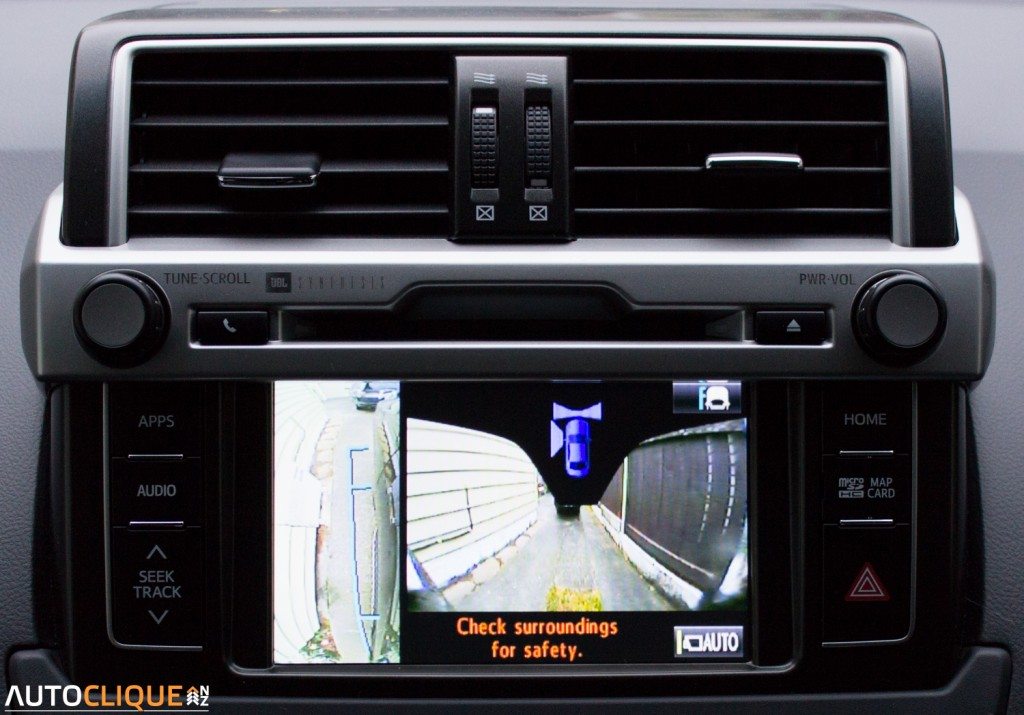
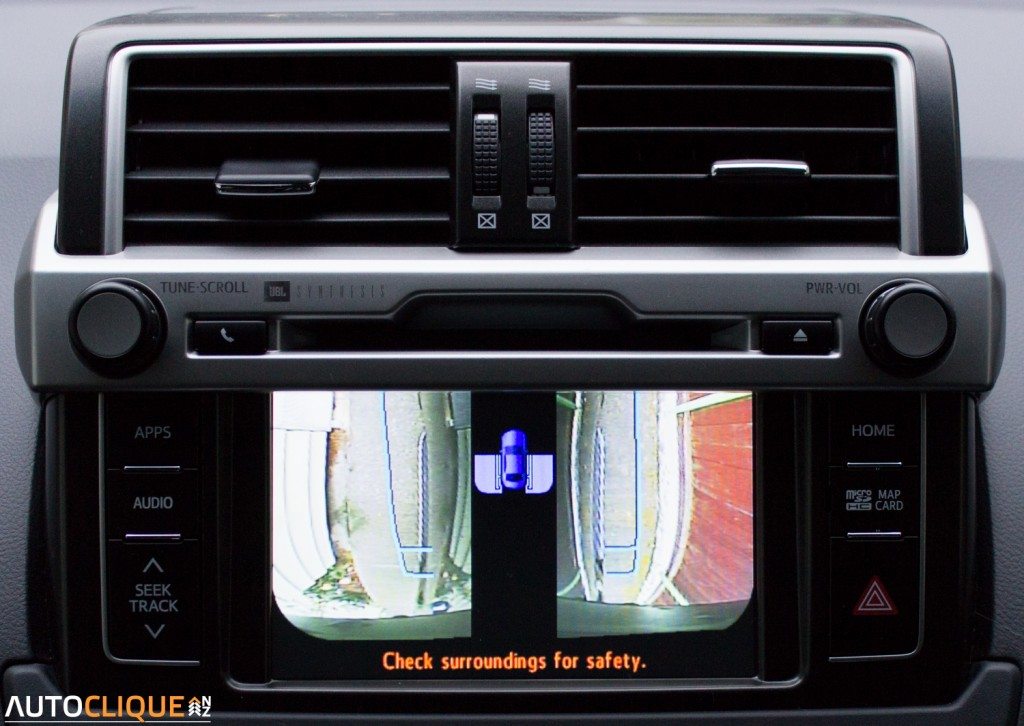
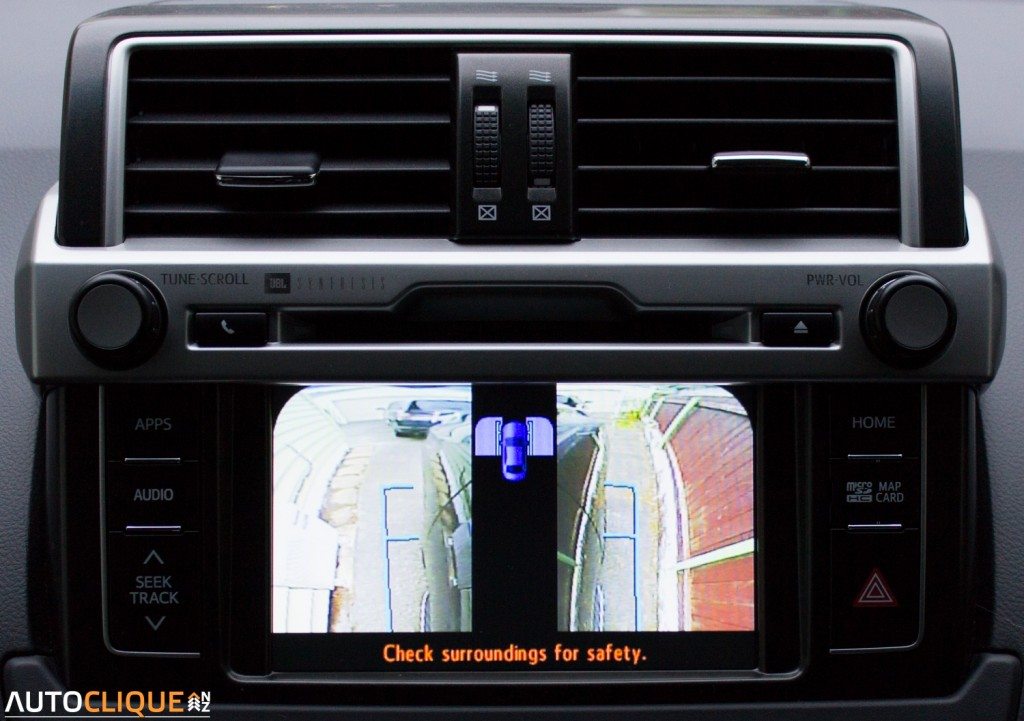
4: I mentioned the illuminated entry in the diesel review, but I’m going to mention it again. It’s one of those little things that makes a difference. When you get close to the Prado, the entire underneath of the car lights up for a bit of safety and also to (I guess) illuminate any puddles. It looks sexy as hell and I wish the Everest did it too.
5: Cruise control stalk position. As per the diesel, it’s a funky stalk almost under the steering wheel. Bleh.
What it’s up against
I did say it was a small group! You could almost add the Ford Territory in here, but the petrol version is only available in RWD. All other AWD SUVs of a similar size are diesel only. Count how many on this table have seven seats…
| Brand / Model | Engine | Power/Torque (Kw/Nm) |
Fuel L/100km (combined) |
0-100km/h (seconds) |
Price Highest to Lowest |
| Jeep Grand Cherokee Overland 3.6i (5-seats) |
3.6L DOHC petrol V6 | 210/347 | 10.4 | 8.3 | $95,990 |
| Lexus RX350 Sports 3.5i AWD (5-seats) |
3.5L DOHC petrol V6 | 204/346 | 10.8 | 8.0 | $89,990 |
| Toyota Land Cruiser Prado AWD (7-seats) |
4.0L DOHC petrol V6 | 207/381 | 11.6 | $89,490 |
Prices:
Land Cruiser Prado GX 2.8 Diesel $78,490
Land Cruiser Prado VX 2.8 Diesel $88,490
Land Cruiser Prado VX 4.0 V6 Petrol (tested) $89,490
Land Cruiser Prado VX Limited 2.8 Diesel $99,990
The good and the bad
| Pros | Cons |
|
|
What do we think?
At the beginning of this article I said I wasn’t sure if I’d like the petrol version much, after loving the diesel Prado VX. How wrong I was. Sure, it really likes a drink, but I had forgotten how much fun can be had with a big petrol SUV. The sound…so much nicer than a diesel. Yes the diesel has far more low-down torque, but there’s just something about a V6/V8 petrol SUV that can’t be beat.
I also said I’d go through a few of the loves/hates I have with the Prado. I don’t really have any ‘hates’. It does everything well, perfectly doing what it was designed for. You feel that weight when going up a hill, and then you forget about it when driving elsewhere.
Read more about the Prado V6 on the Toyota New Zealand website.
| Vehicle Type | Permanent AWD SUV |
| Starting Price | $78,490 + on-road costs |
| Tested Price | $89,490 NZD |
| Engine | 4.0 Litre, DOHC 6-cylinder petrol with VVTI |
| Transmission | 6-speed automatic with sequential shift |
| 0 – 100 kph | n/a |
| Kerb Weight | 2285 kg |
| Length x Width x Height | 4760 x 1885 x 1890mm |
| Cargo Capacity | 3rd Row Fixed – Top of Seat Back 104 litres 2nd Row Fixed, 3rd Row Stowed – To Top of 2nd Row Seat Back 553 litres 2nd Row Folded, 3rd Row Stowed – To Top of Front Seat Back 974 litres 2nd Row Folded, 3rd Row Stowed – To Roof Top 1833 litres |
| Trailer rating | Braked 2500kg Unbraked Trailer sway control on all models |
| Fuel Tank | 87 litres |
| ANCAP Safety Ratings | 5 Star ANCAP rating Safety 7-airbags (Driver Dual Stage, Front Passenger, Front Side, Front/Rear/3 Row Curtain, Driver’s Knee) |


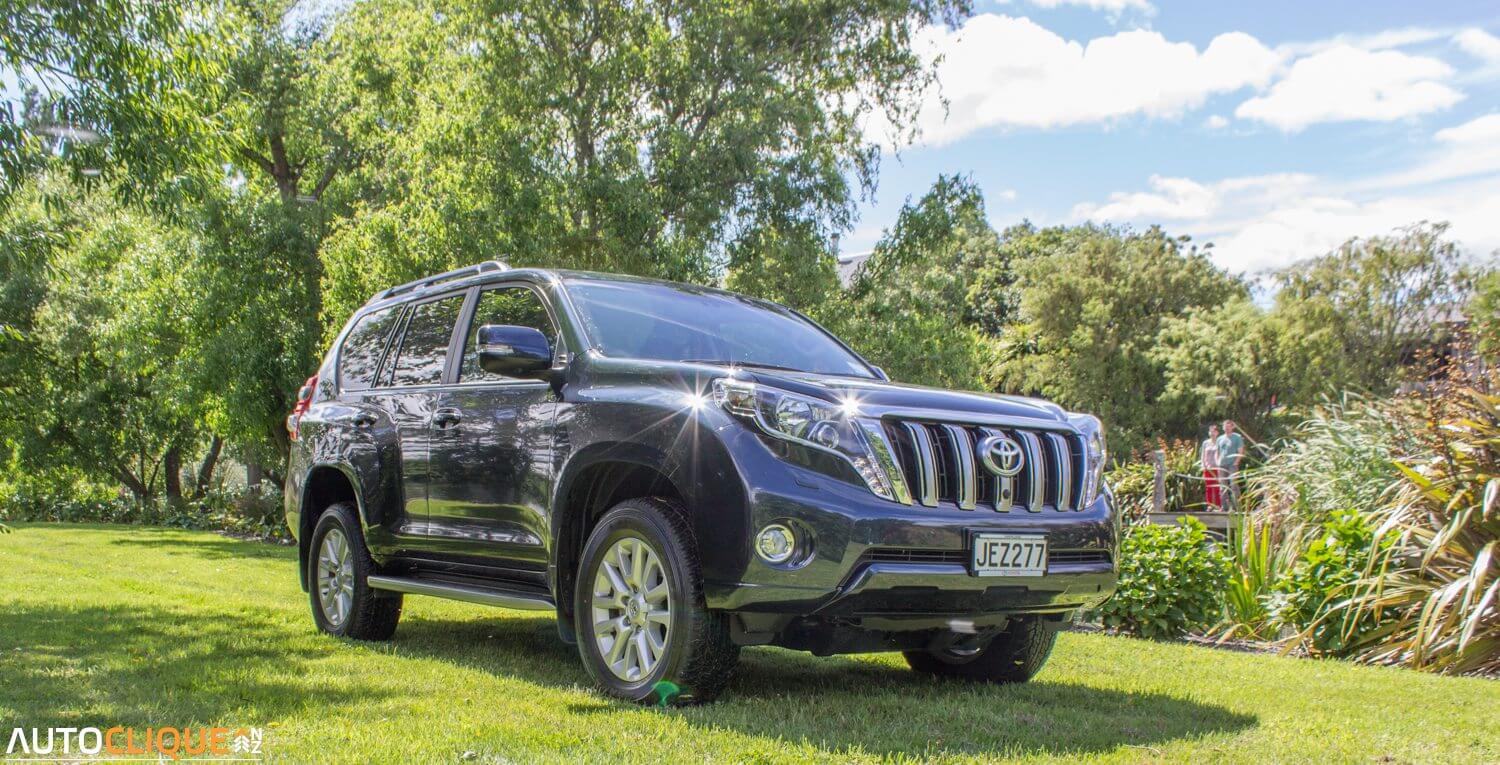
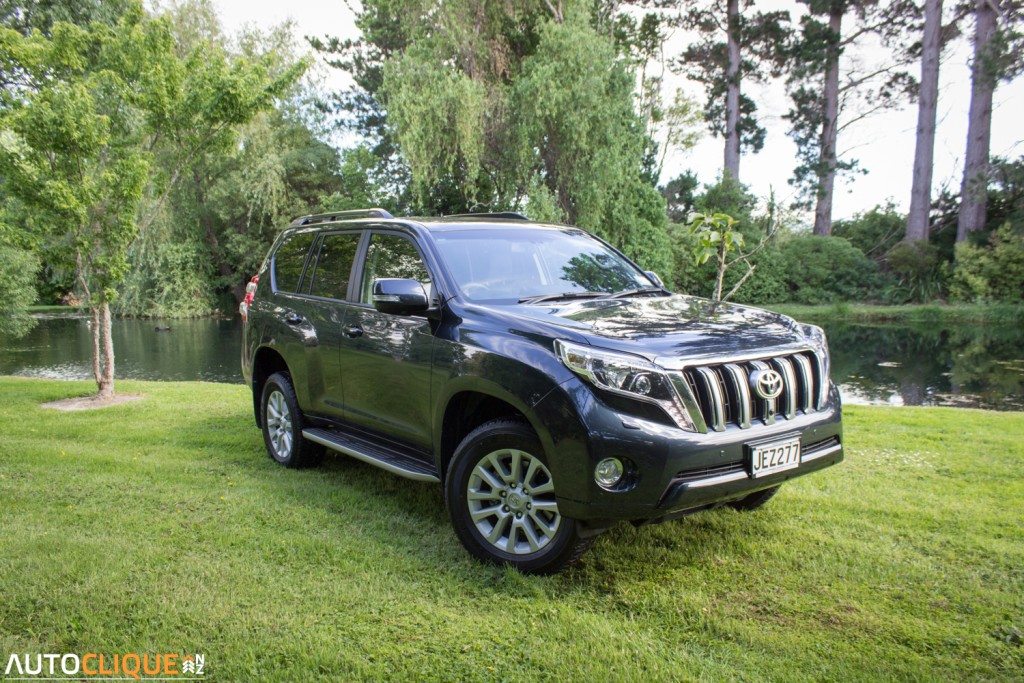
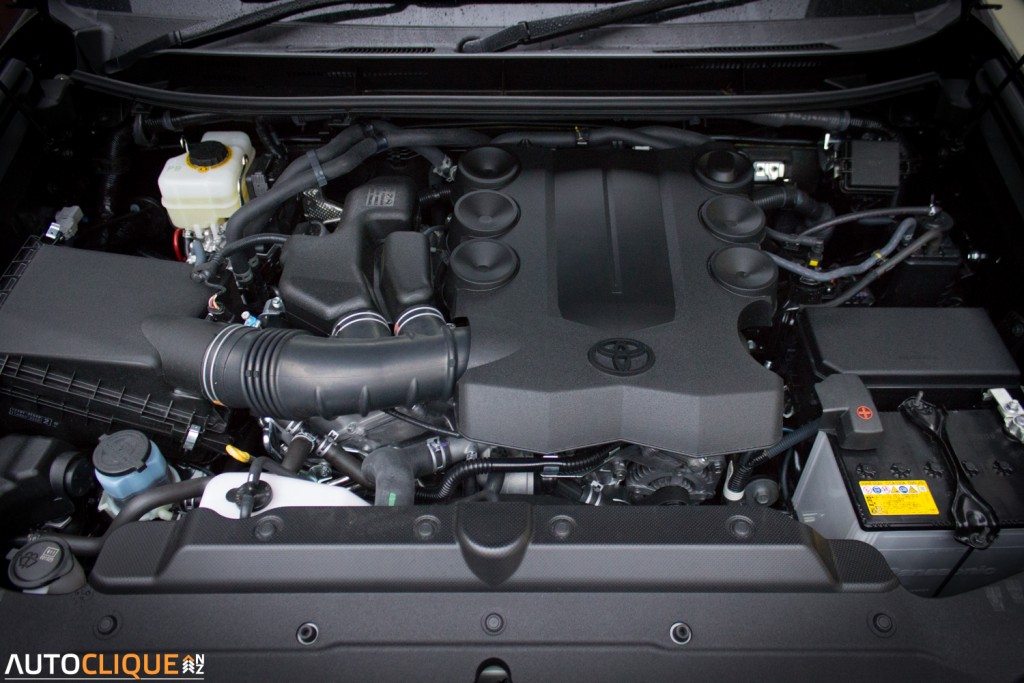
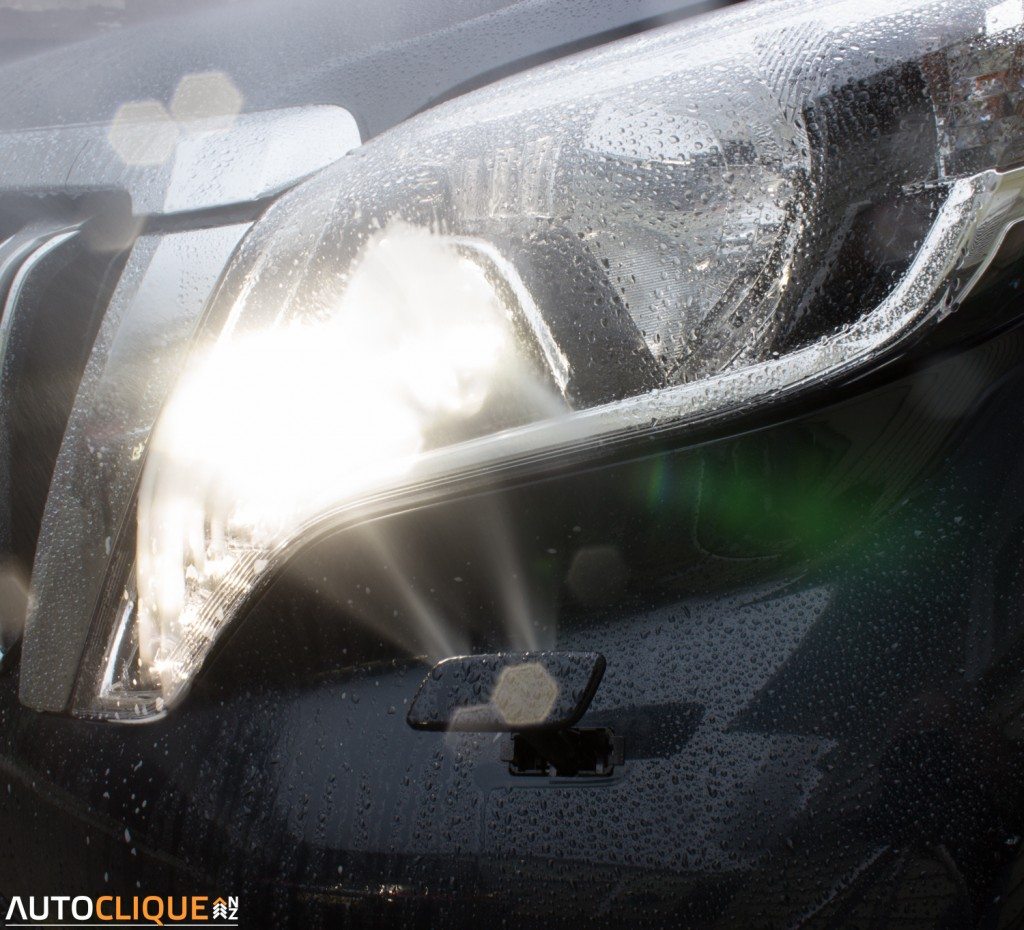
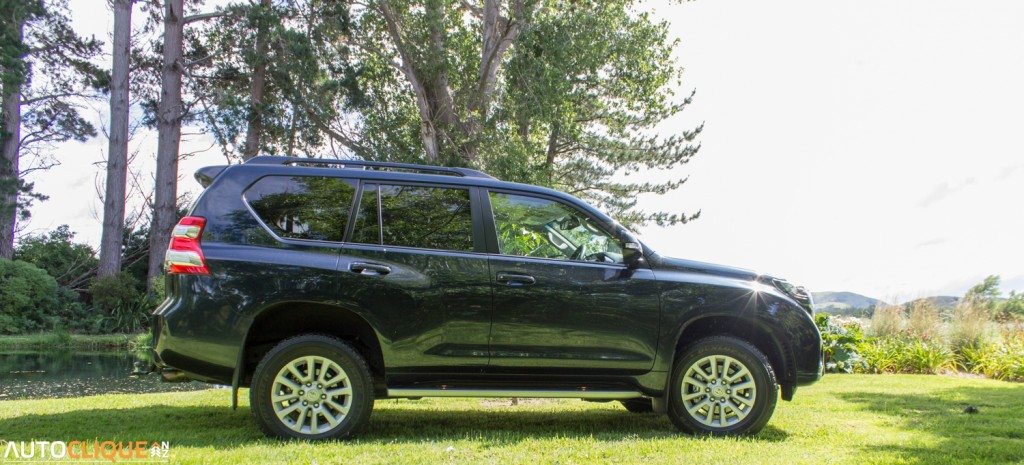
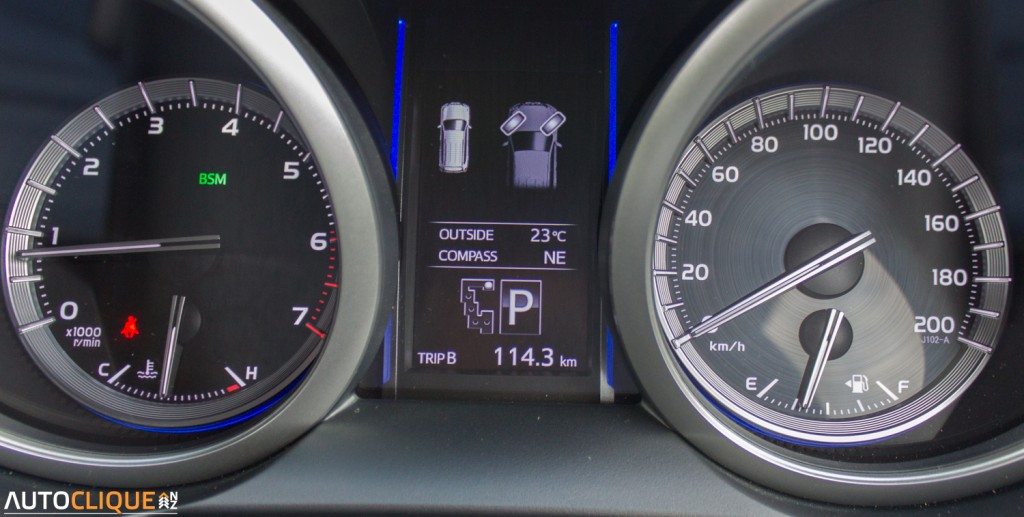












































I bought a v6 Prado and managed to put up with it for 4 months. The lack of grunt, almost every incline kicking back to 3rd and revving its guts out, absolutely bullshit performance, the unusable cruise control, the unusable satnav and the thirst (worse than my 5.7 litre V8 Jeep) was just too much to put up with. Could not get rid of it fast enough.
Hi Rodney
Thanks for the feedback – interesting experience to say the least.
thanks for this